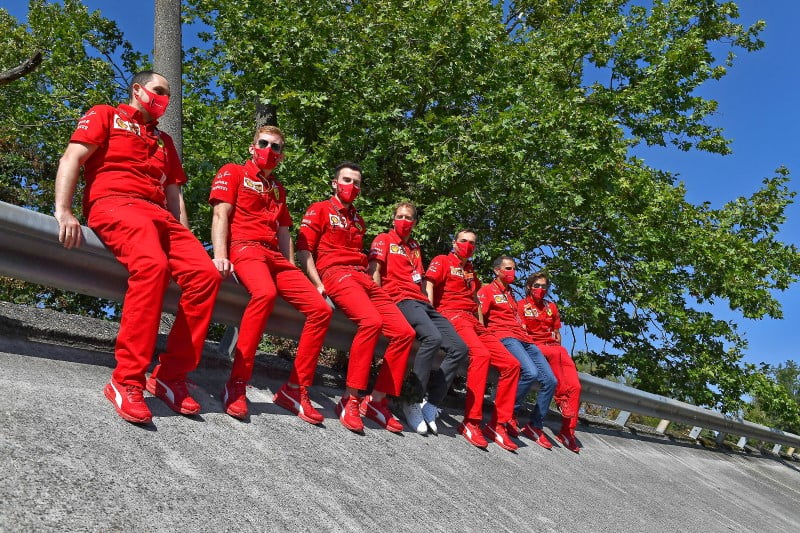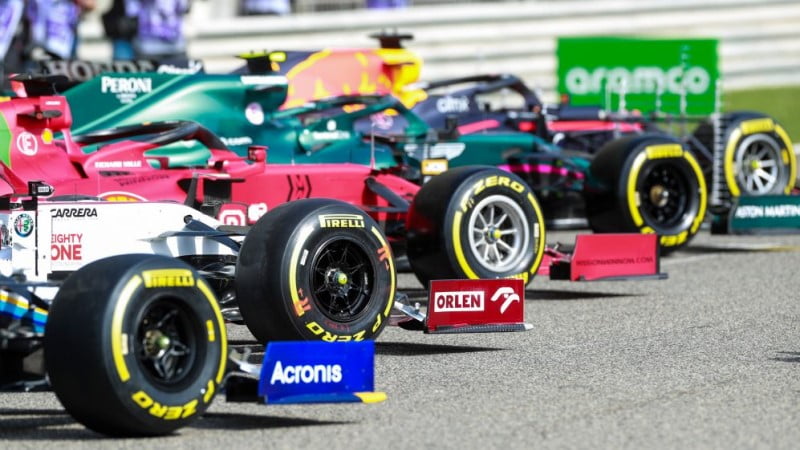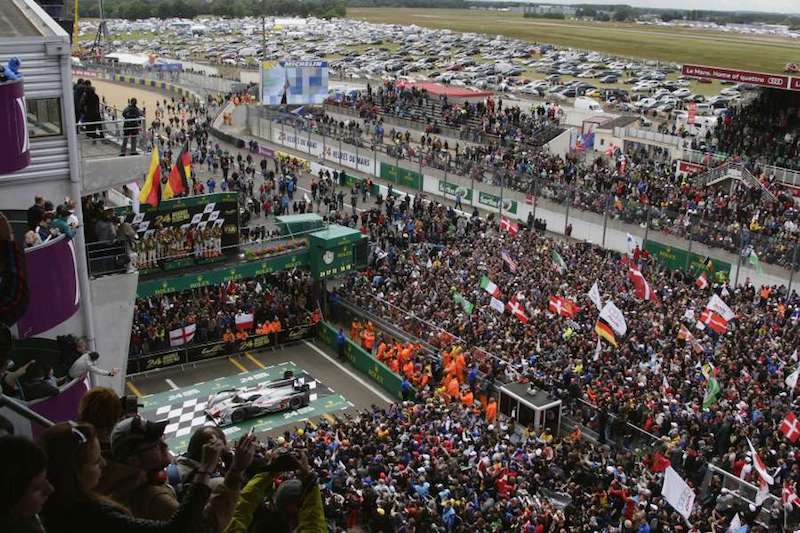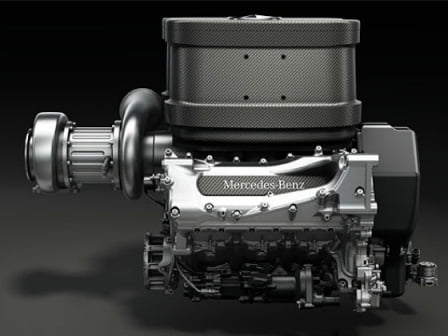‘Know Your F1 Circuit’ is a new series launched on my F1 blog. The posts under this series will be penned by Saumil Patel, an avid fan of the sport. You can follow the full series throughout the season by using the ‘Know Your F1 Circuit’ tag. This post focuses on ‘Autodromo Nazionale di Monza’, the historic venue of the Italian Grand Prix that is also home to the famous ‘tifosi’.
The Autodromo Nazionale di Monza is situated in the Royal Villa, on the banks of river Lambro surrounded by Monza Park near the city of Monza, north of Milan, Italy. Built in 1922, it was the world’s third custom built permanent motor racing circuit. It is home to the Italian Grand Prix since 1949. The only year a race was not hosted was in 1980. The site consists of three tracks, a 5.793-km Grand Prix track, a 4.250-km oval high speed track with steep banking and a 2.405 km Junior track. The track is busy throughout the year hosting other important motorcar, motorbike, cycling and running events. (Read: How Olympic Champion Eliud Kipchoge attempted the fastest ever time for the marathon distance at the Breaking2 race in Monza in 2017)
Did you know? F1 History & Stats: Monza, Italian GP
- Monza was one of seven tracks on the original world championship calendar in 1950. Three others are still on the calendar: Silverstone, Monaco and Spa-Francorchamps.
- Giuseppe Farina won the first ever Drivers’ Championship at the track in 1950. He remains the only driver to have won the title on home soil.
- The Italian Grand Prix is also famous for having produced the oldest Grand Prix winner of all time – Luigi Fagioli, who won the 1951 French Grand Prix aged 53 years and 22 days.
- The closest ever Formula 1 finish was recorded at Monza in 1971 when Peter Gethin won by 0.01s from Ronnie Peterson. The top five finishers were covered by just 0.61s.
- Johnny Herbert won the Italian Grand Prix in 1995, but retired from all of his other 8 starts at Monza.
- Sebastian Vettel’s surprise win at Monza in 2008 for Toro Rosso made him the youngest ever winner of a Grand Prix (at the time), aged 21 years, 2 months and 11 days old.
- In the past 18 races here, the 2009 and 2020 Italian Grands Prix are the only times when the pole sitters have failed to finish in the top two.
- Thanks to the fact that it used to be held at the end of the season, 12 World Championships have been settled at the Italian Grand Prix since 1950, most recently in 1979.
- The 2019 and 2020 Italian Grands Prix are the only two in the past eight seasons which have not been won by the driver who would go on to be crowned World Champion in that season.
- Back-to-back wins are hard to come by at Monza. Lewis Hamilton (2014-2015 and 2017-2018 ) has been the only driver to achieve the feat since Damon Hill in 1993/1994.
- Autodromo Nazionale di Monza can hold over 100,000 spectators.
Monza memories ❤️??
A day that Seb will never forget! ?#ItalianGP ?? #F1 pic.twitter.com/l2mnKeMfzn
— Formula 1 (@F1) September 8, 2021
F1 Stats & History: Monza, Italian GP
The track was financed by the Milan Automobile Club which formed the SIAS (Società Incremento Automobilismo e Sport) exclusively to manage and run the track.
The track was completed in a record 110 days and was officially inaugurated on 3rd September 1922. Its maiden race was the second Italian Grand Prix which was flagged off on the 10th September 1922.
During the 1928 Grand Prix one of the many accidents which tainted the venue took place. It was one of the worst motorsport accidents of the time. Exiting the banking at 200 km/p, the front wheel of Emilio Materassi’s Talbot made contact with the rear wheel of the Giulio Foresti’s Bugatti. Materassi lost control, swerved left, vaulted a fifteen foot wide ditch and propelled into the unprotected grandstand killing 27 spectators, injuring another 26 and lost his life. Races were suspended for the next three years at the venue.
Does it get ANY better than winning for @ScuderiaFerrari at Monza?!
Let’s ask @Charles_Leclerc ? #ItalianGP ?? #F1 pic.twitter.com/qIDfNmPcr3
— Formula 1 (@F1) September 8, 2021
Black Day of Monza: F1 Stats & History
On 10 September 1933, disaster struck again at the south banking of the high-speed loop. Three drivers lost their lives in two separate accidents. Giuseppe Campari, a popular and much admired leading Italian driver who was in his career’s last race (he had announced his retirement to pursue a career as a sopranista) was leading the race in his Alfa Romeo, Campari hit a patch of leaked engine oil, skidded and crashed into the trees going over the top of the banking. Second placed Baconin Borzacchini in his Maserati 8C tried to avoid Campari and lost control, spun and crashed into the trees. Although his car was undamaged Borzacchini died later in the hospital.
The third casualty was Polish Count Stanislas Czaykowski driving a Bugatti T54. On the south banking his Bugatti engine blew up severing the fuel line. The severed fuel line sprayed fuel on the driver and hot engine. The heat from the engine ignited the fuel. Inflamed and blinded by the smoke he flew off the banking at the same spot where Campari and Borzacchini had crashed and burnt to death trapped under his car. It was a singularly horrific day in the history of Motorsport, also remembered as the “Black Day of Monza”.
Between 1934 and 1938 the circuit was updated to increase the driver safety. The length was reduced and the straights were joined by a hairpin, chicanes added and the race direction mirrored all of which resulted in a relatively slower track.
Just before the World War ll, the circuit was rebuilt with new stands and a resurfaced track, 6.3 km long. The high speed loop was removed and two corners were added. During the war the circuit had degraded due to military use and lack of maintenance. Post-war in early 1948 the circuit was once again refurbished and the 1948 Grand Prix was flagged off on the 17th of October.
Pierre Gasly will arrive at Monza as the last race winner of the #ItalianGP.
He’s currently 8th in the Drivers’ Championship with 66 points. In the last 3 races, he’s scored 27 points – that’s the third-highest score by a driver in the top-10 after Verstappen & Hamilton.#F1
— Kunal Shah (@kunalashah) September 8, 2021
The circuit was completely renovated in 1954 to accommodate much better infrastructure and facilities for teams and spectators alike. Two circuits were prepared, a 5.750 km circuit and a new 4.25 km high speed oval circuit with banking corners. Both these circuits could be combined to reconstruct the original 10 km circuit. The combined circuit was used by Formula 1 in the 1955, 1956, 1960 and 1961 Grands Prix.
Disaster struck once again during the 1961 race. Ferrari driver Wolfgang von Trips collided with Lotus driver Jim Clark. Wolfgang von Trips airborne car crashed into the barriers killing him and fifteen spectators. Although the oval section was not the site of the crash it was considered unsafe for Formula 1 and was eliminated from the layout. Only the road circuit would be used in the revised layout hereon.
By 1971 the cars had evolved with advanced mechanics and aerodynamics making them very fast on the straights and corners. The drivers were slipstreaming each other on the straights and using dirty air on the corners. To reduce this and increase the safety quotient, chicanes were placed at the end of the pit straight and Vialone curve for the 1972 Grand Prix.
By 1979 cars were much faster thanks to the use of advanced technologies. The track and infrastructure had to be upgraded for safety measures. Tyre barriers, extended run-offs and kerbs were installed to improve the safety. The paddock and pits were upgraded for the teams and the scrutineering facilities were renovated for the race stewards.
Thereafter all layout changes that have been made to the circuit have been to increase driver safety.
Other annoying part about half-points from Belgian GP is that Max Verstappen, Lewis Hamilton & Carlos Sainz might retire with a ‘.5’ in their career points in #F1 column!
A half-points race happens once a decade (loose stat), maybe VER & SAI have a chance to earn the other half!
— Kunal Shah (@kunalashah) September 6, 2021
F1 Stats & History: Monza, The Circuit
Monza with its simple high-speed straights, sweeping corners and tight chicane format is the fastest track on the Formula 1 calendar. Seventy Five percent of the lap is taken at full throttle with speeds nudging 350 kmph and placing tremendous strain on the engines. Although there are only six braking points on the track, all are heavy braking points generating high brake temperatures – making it a medium brake wear track. Attacking the kerbs in a low downforce trim makes the car skittish and easily de-stabilizes the balance, negotiating the two Lesmos will be an interesting challenge.
Power, aerodynamics, traction and braking stability on this low grip, low downforce circuit with good overtaking opportunities will be at premium, especially through the tight chicanes at turns one, two, the high speed Ascari chicane and at Parabolica.
It is a track that rewards the driver’s bravery and severely punishes the slightest lack of judgement or commitment.
- Circuit Certification: Grade 1
- Circuit Classification: Permanent Circuit
- Circuit Direction: Clockwise
- Pole Position: Left-hand side of the track
- Circuit Length: 5.793 km
- Race Distance: 306.72 km
- No. of Laps: 53
- Distance Grid To Turn One: 638 m
- Longest Flat-Out: 1120 m
- Number of Corners: 11
- DRS Zones: 2 (after turn 7 & 11)
- Track Width: 10 m to 18 m
- Track Elevation: 140.4 m to 153.2 m
- Gear Changes Per Lap: *47
- Fuel Use Per Lap: *1.89 kg
- Pit Lane Time Loss: *25
- Lap Record: 1:21.046 Rubens Barrichello, 2004 – Ferrari
- Record Pole: 1:18.887 Lewis Hamilton, 2020 – Mercedes W11
- Inaugurated: 1922
- Most wins – Drivers: Michael Schumacher & Lewis Hamilton (5 each)
- Most wins – Constructors: Ferrari (19)
* estimated
TRACK GUIDE: @Autodromo_Monza ?
11 turns and 3 long straights, Monza offers #F1 cars a unique glimpse back into the past.
The cars will shoot into the first chicane at 350KPH before losing 240KPH under braking.
There will be 2 DRS zones, so expect overtaking!#ItalianGP pic.twitter.com/DZ5EEpSmMc
— Motorsport Stats (@msportstats) September 8, 2021
F1 Stats & History: Monza, Strategy
Pit stops at Monza are quite costly – 25 seconds; which makes a single pit stop strategy the most-viable option. Most teams would be considering starting on soft (23rd to 29th lap) and changing over to the medium for the rest of the race. If tyre degradation causes concern, changing to hard is also an option, although with the distinct disadvantage of tyres taking time to get in their temperature window on a low grip circuit. Long straights will generate a lot of forces through the tyres and the tyre temperatures will rise even with the cooling effect of the air. Given the weather forecast and estimated track temperature of 40ºc, thermal tyre degradation should not be a major concern.
Monza has the highest braking energies of the season, entering turn one drivers experience braking forces of 4.5Gs. Drivers are on the brake for nearly fifteen percent of the lap. It will be important that the braking system is customized to suit the track and instill driver confidence. It will be essential to safeguard optimal brake cooling without compromising the aerodynamics and stability of the car.
Most teams will be looking to set up their smallest wing angles to minimize drag and maximize performance for the straights which will constantly challenge the driver’s skills in finding their limits considering that understeer is an issue in the first sector and oversteer in the second sector. Perhaps the use of opposite lock technique would come into play here!
Saumil Patel is an avid fan of Formula 1. He aims to take you deeper into the sport by uncovering the lesser read.














